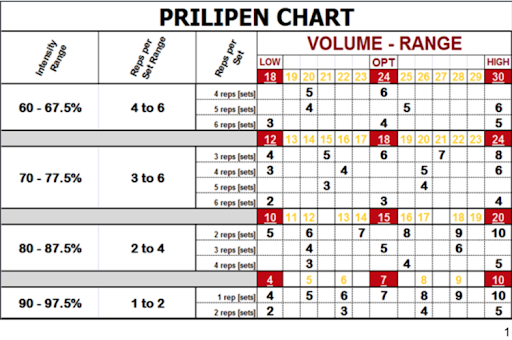CLUSTER TRAINING - BEHIND THE BLOCK
ALLEGIATE YEAR 2, BLOCK 11 – CLUSTERS
We’re coming off an accumulation block where the theme was German Volume Training. 10 sets x 10 reps. For the next 4 weeks, we’re heading into an intensification block. In it, we’ll focus on our speed, power, and strength. Unique to this block, we’re manipulating the rest between reps. The theme is cluster training.
What is cluster training?
Normally when we train, we do a series of reps in a set and then rest. For example, in a 5x5 program, we do 5 reps and then rest for 2-3 minutes. Then we do 4 more sets with 5 reps in each set. We rest 2-3 minutes in between each set to maximize strength going into each set.
With Cluster Training, the design is all about the rest between reps – rather than between sets.
We’re going to get a rep then rest. Get another rep then rest. And then get one more rep and rest. And that will make up one set. This work-to-rest program design is called intra-set rest and has a lot more rest between reps.
Why do we need more rest? Because rest allows us to lift more weight and hit higher tonnages in a training block.
“Rest allows us to lift more weight and hit higher tonnages in a training block. ”
What is tonnage and why is it important?
Tonnage is a term that quantifies overall load used during a period of time. Tonnage = Weight x Reps x Sets. 100x10x10 = 10,000.
Tonnage has been used for decades as a qualifier for national and international levels in weightlifting. Theoretically, if a person can accumulate a higher total of weight in a period of time, they should be able to compete at a higher level.
How do we manipulate sets and reps achieve a higher overall tonnage?
We can do 10 sets of 10 reps to achieve more morphological changes. Like body composition or hypertrophy. Or we can utilize 10 sets of 3 reps achieve more neuronal changes. Like power or force production.
There is a concept called Prilipen’s chart which describes the volume people can hit at specific intensities in a training session:
With this data, we can formulate strategies to squeeze more out of our training if:
We know our results are the aggregate of how much total weight we can lift in a period of time
We know there is a specific amount of weight we can hit per specified number of reps
We have a pretty good guideline to go off on how much volume we can handle in a training session
“Fatigue is the limiting factor when trying to hit more repetitions. This is the basic premise as to why we cannot go forever at a specific intensity.”
Cluster Training allows us to push past Fatigue
Fatigue is the limiting factor when trying to hit more repetitions. This is the basic premise as to why we cannot go forever at a specific intensity. That fatigue could come from central nervous system fatigue or from muscular system fatigue. Either way, we are going to have to stop at a point no matter how much we want to keep going.
If we have 3 reps, adding more rest between repetitions is how we can squeeze 91% when normally we can only handle 90% for 3 sets of 3 repetitions.
“If we have 3 reps, adding more rest between repetitions is how we can squeeze 91% when normally we can only handle 90% for 3 sets of 3 repetitions. ”
Let’s talk about Relative Intensity and see how it relates
If you’re a member at Allegiate and you look at the top of your card, you’ll see a color-coded percentage. That percentage is reflective of the Relative Intensity we are training at for that week. That Relative Intensity is based off a Rep/Intensity Chart which helps predict a number of reps you should be able to use at a specific intensity.
Believe it or not, we do not work at 100% for the entire block. We progress from 70%, 80%, 90% and finish at 100%. With 100% being your 1 rep max.
Working sub-maximally has incredible benefits.
Working sub-maximally builds motor patterns in response to the stress and begins the progressive overload over the four weeks. When we get the fourth week we are supposed to be able to hit 90-92.5% of our max for 3 reps.
The intent is to handle higher intensities for increased volumes so we can accumulate more tonnage. If fatigue is coming from either the muscular system (replenishment of ATP/PC) or from the central nervous system (update or transmission of neurotransmitters) we can override that by allowing for rest in between sets.
In conclusion:
It all comes down to our limiting factors. If our limiting factors are not as limiting, we can utilize higher weights than we normally can. And if we can use higher weights than normal, we can get stronger.
Resources
Kenn, J. Strength Coach’s Playbook.


